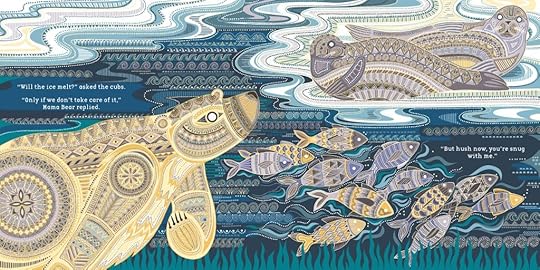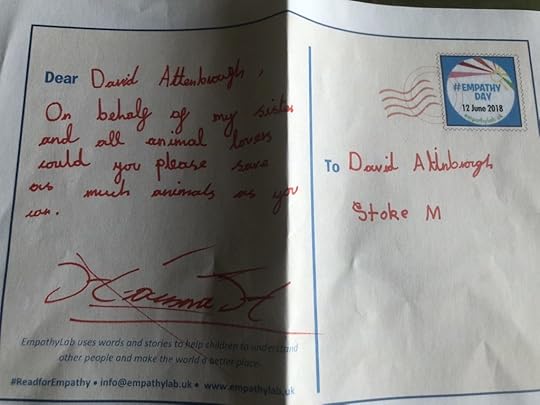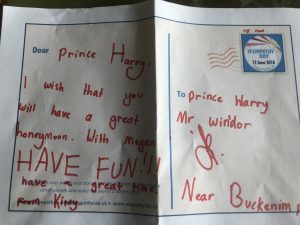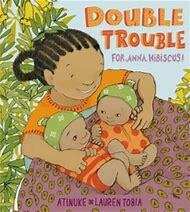Chitra Soundar's Blog, page 4
December 19, 2018
Phew! That was quite a year!
It has been a roller-coaster of a year. Half-way through the year, I left my grown-up day job and became a full-time writer and storyteller.
Since June, I’ve been writing, performing, telling stories in festivals, bookshops and schools. It’s been six months of this new life where I get to write as long as I want, visit schools and work with children on their stories any day of the week and travel across the world to meet readers.
I’ve also started teaching a course at City Uni, on writing picture books and junior fiction, which is a full circle because I started my career as a teacher, way back in 1992.
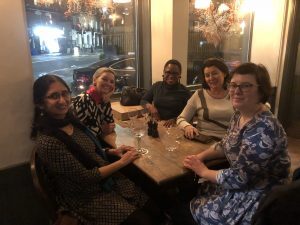 My first picture book class at City Uni
My first picture book class at City UniI’ve done over 24 events for children, 20 for grown-up and visited 44 schools in the year. I got shortlisted twice and won my first award. So all in all, it has been a year of wonderful book stuff.
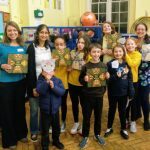
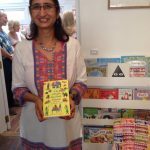
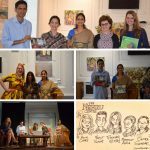
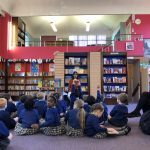
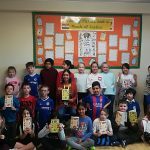
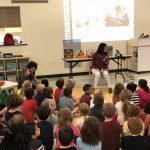
You’re Safe With Me (illustrated by Poonam Mistry, published by Lantana Publishing) came out in May 2019 and has received rave reviews. We followed that up with the Christmasy You’re Snug With Me (illustrated by Poonam Mistry, published by Lantana Publishing) and it has made some of the Best of 2018 lists.
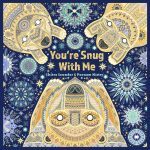
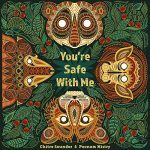
Pattan’s Pumpkin (illustrated by Frané Lessac, published by Otter-Barry Books) came out in paperback with a new cover. In the Farmer Falgu (illustrated by Kanika Nair) series, Book 3 and Book 4 has been released into the UK by Red Robin Books.
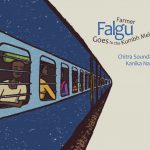
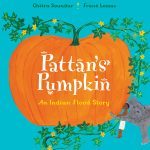
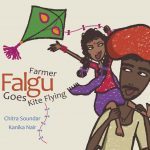
It’s been a busy 6 months daydreaming, imagining, writing, performing and working with children and adults on their stories. I’m going back home to India to relax, rejuvenate and yes, research before I head to the US again for the release of my next book with Candlewick Press.
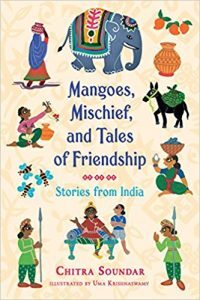
Next year promises to be as busy as this one was. I’m grateful to everyone who has given me an opportunity to write and perform this year and hope to bring more stories to everyone in 2019. I wish all of you a wonderful festive season with your family and friends. Have a happy new year. May your new year bring a lot of joyous moments.
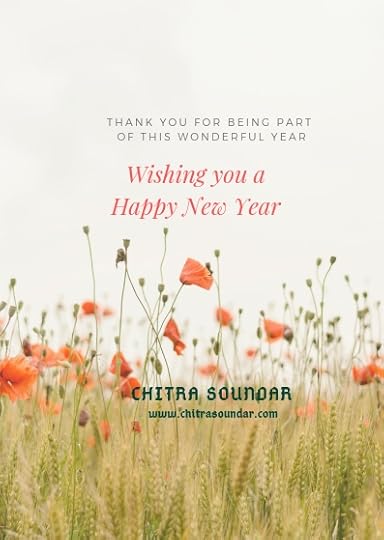
November 10, 2018
The Launch Celebration of You’re Snug With Me
Yesterday we launched the second book You’re Snug With Me in the You’re With Me series at Chestnuts Primary School in North London.
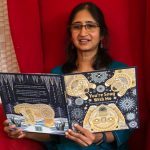

It all began when the librarian Tanya Efthymiou of Chestnuts Primary and I tweeted to each other about a school launch for the next book. It would be fantastic to share the new book You’re Snug With Me with children and parents, and teachers, we thought.
And the idea was born and we took it to the wonderful team at Lantana Publishing who embraced it with wholehearted support.
Then we decided on a date that worked for everyone, we designed an invitation, we planned the day and it all came together wonderfully yesterday.
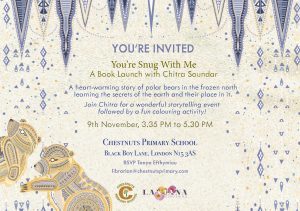
First I met with Reception and Y1 children before the big event in the evening. Then we decorated the hall with the help of amazing library helpers who had read the book and wanted to be part of the launch.
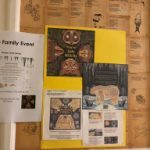


Y6 had done a project on plastics and the ocean and had used art work inspired from both You’re Safe With Me and You’re Snug with Me. It was brilliant to see how the books transcend from the confines of its form and reaches the readers.
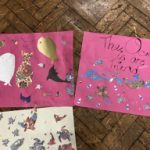

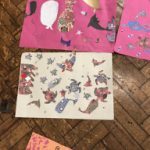
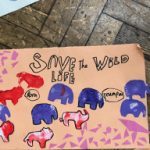
As the bell rang for the final time that afternoon, parents and children started filing in.
We started with a storytelling from the book in which children joined in enthusiastically and then Alice Curry, publisher of Lantana Publishing spoke about books for under-represented children and why reading the 1% was so important.
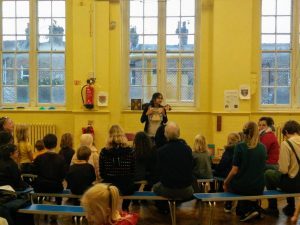
Then it was party time – colouring in masks and colouring sheets kindly given to us by the illustrator Poonam Mistry, who couldn’t make it to the launch (we missed you!). I signed loads of books for parents and children, the school and the library too.
What a surprise, I had an author friend Paul May who came to celebrate the launch with me too!
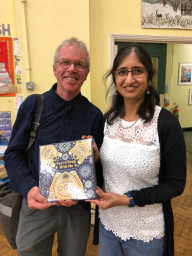
All in all, a wonderful way to celebrate the publication of a new book. My heartfelt thanks to everyone at Chestnuts Primary School who came to the event, helped us make it a success. A special Woot-Woot to the head-teacher Mrs Katie Horwood and librarian Tanya Efthymiou who hosted us.
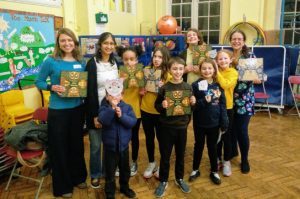
September 22, 2018
Harness the potential of a book
As a child in the21st century, there is so much to worry about. From not being able to play outside to dangers on the Internet. They’re hardly left alone and adventures from books in the 70s seem like another world. While some children are able to talk about their fears, many do not have the language or the emotional confidence to voice their anxieties.
There is not a lot of time to sit down and listen, to ourselves, our inner voices and our children’s unspoken fears. Our lives are full of commute, routines, school work and social media. How do we then settle down quietly to talk about such anxieties? Will it even work if you asked a child, if he/she is afraid of something? This is where books come in. Reading books that touch upon anxieties within a story can often help a child reflect on their own anxieties. They might even mention if they had the same question. They might come forward with something they had worried about.
NHS advice says while younger children often have separation anxieties that will slowly go away when they grow older and go to nurseries or sleepovers, other anxieties especially social ones start to manifest. Many anxieties are not serious enough to see the doctor about and can be dealt with one important medication all parents hopefully have access to – books.
A story for a child is never just a story even when it’s full of fun and adventure or fart and poo. Look closely and you will see the gateway into themes that a parent can pull into a discussion.
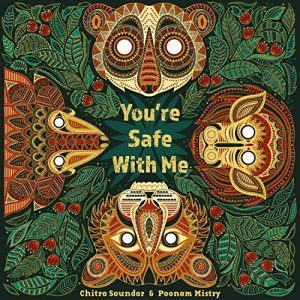 When I wrote You’re Safe With Me, at first, my only real goal was to reassure the animals in the forest about the thunderstorm. I approached it as a storyteller first and then as a poet. When the book was written and beautifully illustrated by Poonam Mistry, and published, it created wonderful responses from children. I’ve discussed their fears about natural disasters and they have been able to tell me that they feel reassured after reading the book. Read one of my earlier posts about how children can deal with the fear here.
When I wrote You’re Safe With Me, at first, my only real goal was to reassure the animals in the forest about the thunderstorm. I approached it as a storyteller first and then as a poet. When the book was written and beautifully illustrated by Poonam Mistry, and published, it created wonderful responses from children. I’ve discussed their fears about natural disasters and they have been able to tell me that they feel reassured after reading the book. Read one of my earlier posts about how children can deal with the fear here.
So when I started writing You’re Snug with Me, a few things were in the back of my mind. The two polar bear cubs born in the snow den, are going to encounter a fierce natural environment they have to cope with. They have never left the warmth of their mother’s embrace for almost nine months, and then when they find this vast region of ice and snow, would they worry?
As a child, growing up must be exciting and worrying in equal measures. What if I sit next to a boy or girl I’m not friends with? What if my new teacher is stricter than the one I had now? What if my new school is too far away? They’ll be picking up on the conversations they overhear in school or at home about teachers, about other children in their class and wonder how it would affect them.
The bear cubs too have similar questions. Who will they meet when they get out of the den? Will Mama leave them alone or would she stay with them? How fierce are the snowstorms and drifts? And more importantly, will all this ice stay frozen?
Of course, at the outset, the story is about polar bear cubs. But then if you use the text to steer the conversation about similar fears children might have – will the giraffe go extinct before my next birthday because I’d like to go and see them in the zoo? Will there be more floods and earthquakes as I grow up and what can I do to stop it?
Then go further – ask them what other things might worry them? Especially if a child is going to the nursery for the first time or transitioning from nursery to reception, talk to them about embarking on that adventure – exciting as well as scary as it might be.
Books are wonderful resources to discuss children’s anxieties. Parents can gently ease into these. Also there is a wide array of books available that either focus or touch topics on the periphery – as a parent you know when you want a big dose of something and when just a pinch is more than enough.
All my books come with activities too – from colouring to solving word puzzles, go further than the book. The more children interact with a subject matter, the deeper their introspection gets. Put your listening hat on and jump into the joys of a book.
September 18, 2018
An Interview with fabulous illustrator Poonam Mistry
Poonam Mistry is a freelance illustrator living in the UK and graduated in 2010 with a degree in Graphic Design and Illustration at the University of Hertfordshire.
Her style incorporates her love of nature and her Indian roots and explores the relationships between pattern, shapes and colour. Poonam’s upbringing and childhood have heavily influenced her work, in particular being surrounded by Indian fabrics, paintings and ornaments. She loves folklore tales and stories of Hindu Gods and Goddesses and these have been a rich source of inspiration in a number of her illustrations.
Poonam creates her beautifully intricate images by hand using fine liners and then digitally alters them.
Poonam and I have worked together on two books and I wanted to ask her some questions on everyone’s behalf. So here is my interview with Poonam.
This is your first illustrated book. How is it different from creating your own artwork?
It wasn’t so different actually. I think this was because I tried not to approach the project as a children’s book. I didn’t want to ‘dumb’ down the images just because it was aimed for children. With ‘You’re Safe With Me’ I wanted the artwork to feel more like art/wallpaper rather than your standard children’s book and the pages to reflect the metaphors and imagery conveyed in the text rather than just illustrating the actual narrative. The illustrations were made to appeal to both children and adults. The story is so beautiful it was important for me to focus on that and really get that across. I think it was a case of trying something new too. The great thing about working with Lantana was the creative freedom they gave me for this book. It was such a natural enjoyable process so it was like working on my own personal work.
There were just a few things I had to take into consideration unlike my own art. I think the 3 biggest differences were size, the amount of pattern I used and of course time. With my own art I have no deadlines or guidelines really. I allow myself the freedom to let the art take its own direction and natural course which is exciting because sometimes I haven’t even sketched out or planned what the final art will look like. With ‘You’re Safe With Me’ the rough sketches are similar to the final pieces. I can go quite crazy with the amount of pattern I draw in my own work. I don’t think that’s a bad thing but with this book I tried to get the balance right.
What is your process for interpreting the text into spreads?
First of all I read the text multiple times so that I knew the story well. I then went through each spread and highlighted anything that I thought visually summed up the key elements of the text. I sketched out multiple ideas for each spread in pencil and then narrowed these down for 2/3 ideas for each page highlighting my favourite ones.
Alice Curry then picked the ones she thought worked well. I sketched these out neatly in pencil and drew over them adding details and patterns on thick cartridge paper using black ink pens. I scanned these in onto the computer and added colour and the final details on PhotoShop. My process is a mix of hand drawn elements and digital work. Ideally I would love to do all my work by hand but it is time consuming and would take months.
Does your art follow a traditional folk art pattern?
Not necessarily. I love folk art. It is a huge source of inspiration for me but I am fascinated by many types of decorative arts celebrated across the world. I use a lot of dots in my work, which is taken for Aboriginal art. I also adore African masks and totems, Scandinavian art and design and ceramic tiles. It’s a combination of lots of things really.

Mostly I take inspiration from Indian folk art. It is stunning and something that has had a huge influence on my style. Kalamkari textiles are the biggest influence in my work and the patterns I use. I would love to try this process one day or have my work applied to this. So much craftsmanship and skill goes into this and I am just in awe of it.
What do you like drawing best? What do you find challenging?
I love drawing birds and rabbits. They feature a lot in my work, especially my personal work. Animals in general are fascinating to draw, especially strange unknown ones. I loved drawing the pangolin for ‘You’re Safe With Me’. It was something I had never heard of before and it was fun to try and translate it into my style.
I confess my strength has never been people. I remember once drawing my Dad and he asked me after I had finished it if he had a big nose. I think that completely put me off! Strangely I find Hindu Gods and Goddesses easy to draw in my style. Recently I have introduced human figures into my work and surprisingly I feel I have found a way of drawing them that doesn’t scare me. It’s quite exciting now. I have always been so comfortable drawing animals but I feel that drawing people and adding them into my patterned landscapes has added a new dimension to my work. It could be something seen more in my illustrations in the future.
 You’re Snug with Me, the second book in this series is out on November and is available to pre-order now. Please find out more here.
You’re Snug with Me, the second book in this series is out on November and is available to pre-order now. Please find out more here.
August 19, 2018
How to harness the potential in author visits?
Step 1: Have you found the author you want and agreed a date? Great. Now agree details with them on nu mber of sessions, the classes they would visit. Tell them a bit about why you want them to visit and what would benefit your school.
mber of sessions, the classes they would visit. Tell them a bit about why you want them to visit and what would benefit your school.
Step 2: At least a month before the author visit, reach out to the author and ask for what activities the class could do before they come. Here are some ideas:
Read the books of the author
Discuss the topics across the curriculum
Inform all teachers, and librarians of the teacher’s visit
Tell the parents about the upcoming visit and encourage them to go to their local libraries and borrow the books.
If the author shares their personalised activities, lesson plans try them out in your classes. For example, I have a website full of activities for my books.
Step 3: Two weeks before the author visit, either for the whole school or for your individual class, set up committees.
A welcome committee – two students who are shy and need support to welcome the author on arrival and thank the author when they leave.
A research committee – an ICT project team that will find out more about the author from their website and other safe sources.
An art committee – a group of children who will either create posters, cards or music (or find songs) to match the books of the author.
Logistics committee – a group that’s responsible for author’s lunch, water and other organising
Book sales committee – a group that will design and create an order form, agree to man the till and create a sales list when done.
Assembly committee – this could be the group of people who normally look after the projector and the assembly computers etc who will assist the author on the day.
Remember the children are improving their literacy, maths, arts and research skills all the while being proud of their committee membership.
Step 4: Order the author’s books for your school library so they arrive before the author arrives. Make sure your librarian is fully aware of the author visit and is part of your organising committee.
Step 5: Are you arranging book sales? Do you know how it will happen? If you’re unsure of this, talk to the author. Many will sell their own books and others would refer you to a local indie bookshop. Bookshops work closely with schools to deliver books to the school and take them back after the sales. Click here to find out if there’s a bookseller local to you.
Step 6: Inform parents a week before the author visit. If your school has a website or newsletter, announce it there. Make sure the order forms have reached the parents.
Step 7: Remind the children and parents the night before the author visit and create a buzz. Get the children to prepare questions for the author. Remember, many authors already have a lot of info o
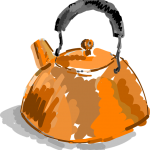
n their website. Encourage the children to ask something different. Authors love it when they have to think about the answer.
Step 8: On the day, do show the author where the toilets are, staff-room is and how they could make a cup of tea. If you’re providing lunch, explain to the author how that will work and who will be their escort.
Step 9: During the assembly and workshops, be present and engaged. Don’t cut into the author’s time or interrupt them for disciplining the children often. If the children are motivated through the above steps, they would be listening to every word the author utters.
Remember to get your library books signed too. Authors would gladly do so even in their lunch hour or as they wait for children to buy books.
 Arranging an author visit is a lot of work. The trick is to delegate much of the preparation to the children, thereby empowering them to be leaders, managers, public speakers and volunteers. Spread the responsibility across all classes and ask for help from other teachers, TAs and even your PTA.
Arranging an author visit is a lot of work. The trick is to delegate much of the preparation to the children, thereby empowering them to be leaders, managers, public speakers and volunteers. Spread the responsibility across all classes and ask for help from other teachers, TAs and even your PTA.

p1030050
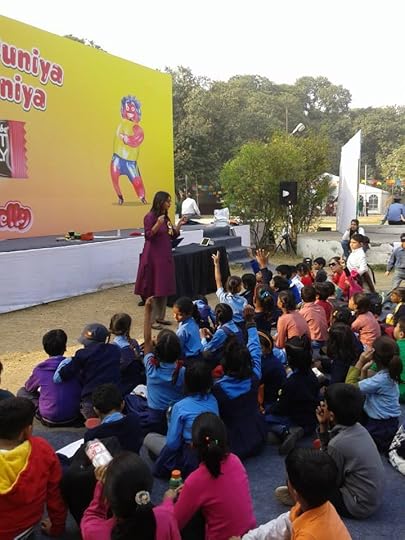
festival1

P1020989
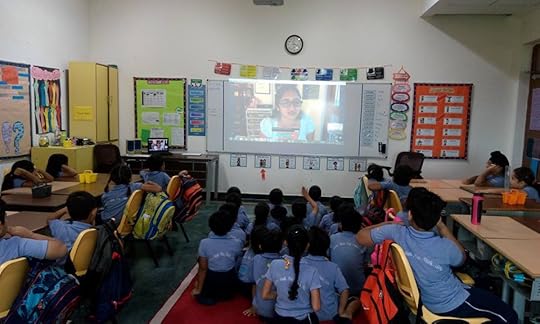
11988727_867511133331373_7090665875316021014_n
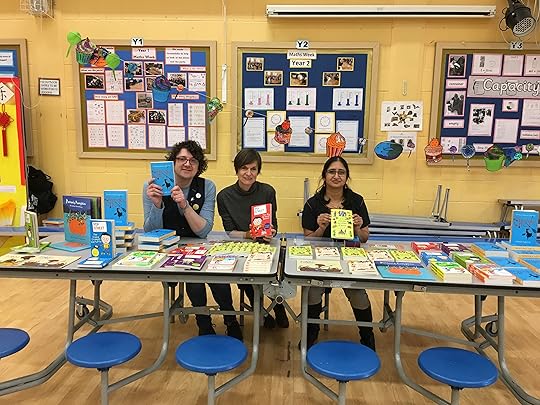
IMG_3777

IMG_3844

IMG_3847

11988727_867511133331373_7090665875316021014_n
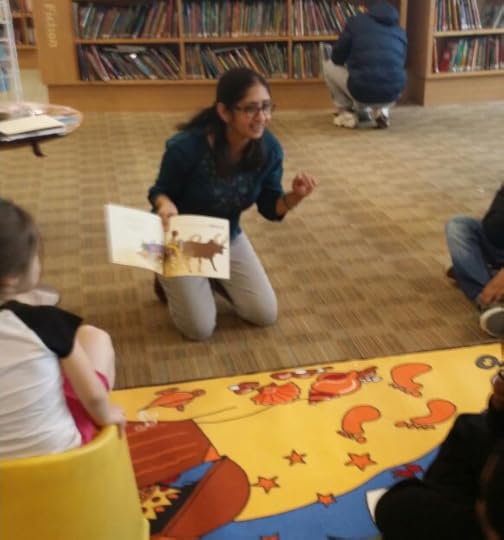
Botwell Green Library - 1 Chitra celebrated National Libraries Day with Botwell Green Library in Hillingdon
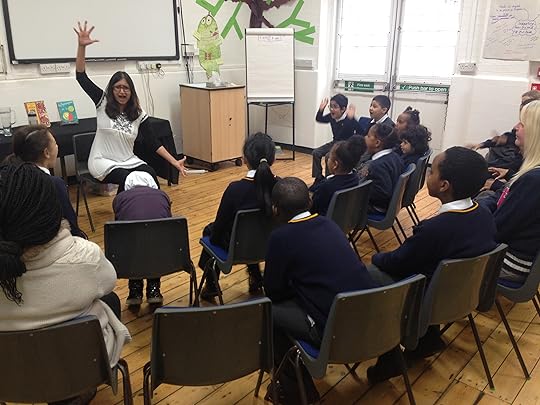
Wonderful World of Stories Telling stories from India and Asia at CLPE during the National Storytelling Week celebrations
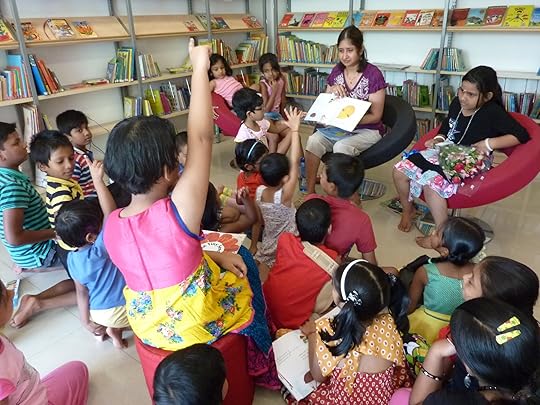
Reading stories from Balu's Basket and Where is Gola's Home? Check out events page
[image error]
Storytelling at Rosendale Primary Check out Chitra's storytelling page

Storytelling at Rosendale Primary Check out Chitra's storytelling page

Idea Blaster workshop at Bookaroo! Check out School visits and workshops.
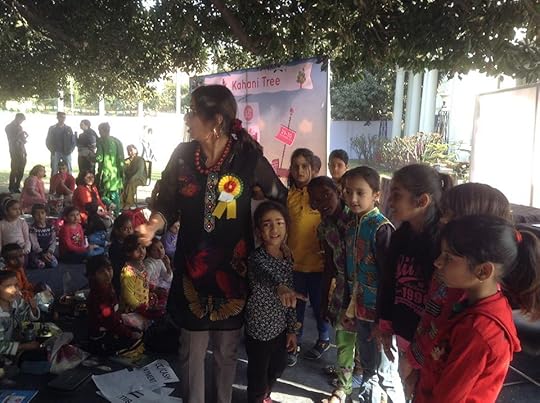
Stories under the Kahani Tree at Bookaroo! Check out Chitra's Storytelling page.

Falgu visits Sankara Vidyalaya

Tall Tales Top Dog workshop at Bookaroo with the German school kids Check out the School Events page.

Farmer Falgu Goes to the Market launched at the Bookaroo!

Farmer Falgu Goes to the Market launched at the Bookaroo!
An author visit can bring enormous value not just in reading for pleasure, but in so many ways if you harness its full potential.
A new term will start soon and I wish you and your children many author visits in this brand new year. If you want to find out more about my author visits, please click here.
July 15, 2018
A Jar of Rewards
I’m so happy to share that A Jar of Pickles and a Pinch of Justice won the first ever Eugenie Summerfield Children’s Prize.
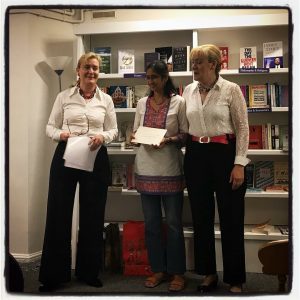
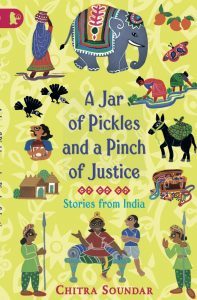
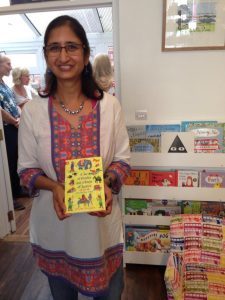
I had entered the prize when I was based in Wiltshire and it was wonderful to see so many connections with the prize. I studied in Corsham Court as part of my MA in Writing for Young People (Bath Spa University) and Caroline and Angela Summerfield, daughters of Eugenie Summerfield told me that she too had studied at the art college that existed at Corsham Court before that.
The judges shared with me that they loved reading the imagery, colours, smells and taste of India in the story. The stories in this book are based on the folktales of India, clever trickster tales that my Grandmother told me and I was so happy that the oral storytelling tradition had seeped into the text. As a playwright herself, Caroline said that she thought it was very suitable for reading aloud.
A professional actor read out my text and a text from Eugenie Summerfield for all of us and made the text come alive. We then signed books, ate cake, drank tea. I then braved the most unreliable of all things on the evening of the World Cup win – Great Western Railways.
I want to say a big thanks to my agent Phil Perry and Abi Sparrow of SP Agency for supporting me today and everyday as I write and giving me the confidence to go to the prize ceremony despite the travel disruptions.
My project partners – Uma Krishnaswamy, the illustrator and Mara Bergman, Editor at Walker Books surely share this prize with me and were a big part of its appeal.
And finally I want to say how surprised I was to win because this book was on a shortlist with five other amazing books by wonderful friends.
 Out in the US in Jan 2019 from Candlewick Press
Out in the US in Jan 2019 from Candlewick PressA quick note for US readers:
A Jar of Pickles and a Pinch of Justice along with
the first book in the series A Dollop of Ghee and a Pot of Wisdom
is coming to the US in January 2019. Find out more here.
Inspired by India – An event with Nehru Centre
Lantana Publishing and the Nehru Centre had arranged a panel event to discuss two recent books in 2018, created by writers and illustrators of Indian origin.


Poonam Mistry and I talked about our first book together – You’re Safe With Me. Ranjith Singh and Mehrdokht Amini discussed their book Nimesh the Adventurer. The panel was chaired by Alice Curry, publisher and co-founder of Lantana Publishing.
The event started with a short intro about our growing up with photos and a little taste of our Indian influence and in Mehrdokht’s case her Iranian upbringing. We also talked about whether we had started writing and drawing at an early stage.
Alice asked us questions about our books – especially about the setting. While You’re Safe with Me is set in an Indian forest, Nimesh the Adventurer is set in a London neighbourhood similar to Southall. We talked about how creating books for western audiences differ from writing for an Indian audience. We also discussed the benefit or hindrance of labels and being known as “Indian” creators, rather than creators who happen to be Indian.
It was wonderful to see so many friends, well-wishers and industry peers and professionals who attended the event. Apart from signing books, we also had the joy of enjoying the art gallery currently on display at Nehru Centre.
Here is a quick preview of some photos…
The highlight of the evening was of course illustrator Sarah McIntyre drawing us as we spoke. You see above the panel in her artwork. And here below is a very accurate picture of me, in my new sari from India.
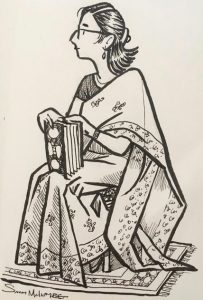 Thank you Sarah
Thank you Sarah
June 3, 2018
Talking About Empathy at Stoke Newington Festival
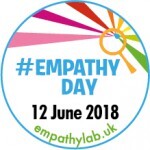 Empathy Lab and Stoke Newington Festival invited me to present a storytelling and Empathy workshop with You’re Safe With Me, which is on the list of #EmpathyReads for this year.
Empathy Lab and Stoke Newington Festival invited me to present a storytelling and Empathy workshop with You’re Safe With Me, which is on the list of #EmpathyReads for this year.
Many young families with babies to 10-year olds were present, eager to listen to a story and talk about empathy. I started the session asking about the difference between sympathy and empathy.
It was easier for some 8-year olds to explain sympathy to me. And then slowly we discussed the concept of empathy. Find out more here. As I explained the various elements of it, even five year olds could relate to it. One child put up its hand to explain how she knew a friend of hers was hurt in the playground the previous day, and how she felt sorry.
Then I told them the story from You’re Safe With Me. We had one avid listener who was fascinated with Mama Elephant and he was so worried why she didn’t appear in every spread in the book. The new animals they had seen in the story – loris and pangolin touched their curiosity. And when I explained about pangolins and how we need to save them – one child remembered and asked about it during the activity time we had.
The hall was full of young children who were fascinated with the story of thunderstorms, thunder, lightning, the hungry river and the loud wind. They actively participated.
And then came the activity. We had Empathy postcards (check out the resources on the Empathy Lab website) and I explained to the children that we are going to make a wish for someone else.
Here are some of the wishes they came up with during the session:
My Nan, because she needs an operation in her eye and she needs to get better to look after Grandpa.
My grandpa because he is on a stretcher and he needs to get better.
My teacher because she spends a lot of time preparing for class.
My friend – I want her to be my best friend forever.
I want my friend to have a pedal bike too because I have one.
I wish for David Attenborough to save more animals
I wish Donald Trump would not be President.
I wish Prince Harry a happy honeymoon.
Joanna, write a new book. (On asking who Joanna was, of course it was J K Rowling! Duh!)
And this one broke my heart – I wish my friend would be nicer to me. I spoke to this little girl and we talked about how she could find out more about why her friend might be rude to her. And maybe she should also say how she feels like, to her friend.
After that wonderful time writing wishes for someone else, they did colouring in and made masks (you can download them here). Towards the end of the session, one child had a tantrum when he had to go home. “I don’t want to go!” he declared. Another came to me and said, “Thank you for the story.” And her little sister, perhaps just four, said, “I loved your story, you made my day.” And she gave me a hug.
It’s my privilege to be able to write and tell stories to children. And when I know I touched a few hearts and helped them to discuss the thoughts behind the stories, it makes all the trouble worth it.
When I write a new story, I might know who might like it or what ingredients should go into it. Even when the book is out there, you don’t know who it’s going to reach. But when it actually connects, the circle is complete and that’s when the book is truly an agent for change.
12th June is celebrated as Empathy Day across the UK. Find out more here and perhaps you will find the time this 12th June,
to read one of the books from this year’s list,
share your Empathy inspiring books and
take one action that reflects empathy.
Follow Empathy Lab on Twitter here. You can follow me on Twitter here and on Instagram here. From now up to 12th June and of course after that, we will be discussing empathy, recommending books and sharing ideas, experiences and more.
May 16, 2018
What additional ingredients are required to create a series that is led by a character from Black, Asian or Minority Ethnic heritages?
This post is a continuation from the first part – What are the ingredients of a universally appealing early fiction series? By Chitra Soundar hosted on An Awfully Big Blog Adventure, a community of brilliant blogging authors. Also I wish to make a full disclaimer that I wrote this, in 2015, as part of my MA in Writing for Young People at Bath Spa University. So it doesn’t cite newer series. And that’s why it has some clever quotes from academic references. This is not normal for me.
Series fiction is the child’s first gateway into the world as an independent reader. They understand not only their school and their friends but also family relationships, life values and about losses, celebrations and their heritage from these books.
Buchoff (1995:230) writes in The Reading Teacher about family stories: ‘When incorporated into the elementary curriculum, family stories are effective tools for encouraging students to learn more about their heritage, to acquire and refine literary skills and to develop greater respect for the multicultural differences that make them unique.’
Therefore it is critical for children from Black, Asian and Minority Ethnic communities to see their own family and cultural setting in these stories. It is important for them to recognize familiar words and their meanings from the stories that they read.
They should recognize familiar family structures in these stories – living in a joint family, having different or hybrid bedtime rituals, celebrations and festivals that are more culturally specific to them. All of that adds to their overall understanding of their own world – as the learning always begins with the known and proceeds to the unknown.
Opitz (1999:888) quotes Galda (1998:275), ‘All readers… need books that allow them glimpses of the selves they are, visions of the selves they’d like to become, and images of others that allow them to see beyond who they are.’
I read a number of early-fiction series published in the UK and the US, with lead characters from Black and Asian backgrounds, to understand the specific ingredients – the spices that are added by pinch into a popular recipe that make these books diverse and multi-cultural yet universally appealing.
Setting
The stories can be set anywhere – either in contemporary Britain or contemporary Africa or Asia – but the setting and characters must be as authentic they can be. Atinuke tells us stories about Anna Hibiscus and the No. 1 Car Spotter who live in Amazing Africa. Hilary McKay’s Lulu and Lenore Look’s Ruby Lu are based in contemporary USA.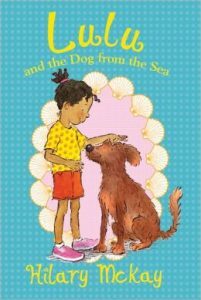
Wherever they are set, these stories include authentic customs and traditions of similar families – how do they cook or eat? What kind of food do they eat? How do they address their mothers and fathers and grandparents? What language do they speak and more importantly how are their family and social interactions similar or different to mainstream culture?
Culture in the Core
The stories in these books arise partly or fully from the culture. The culture is not the backdrop alone – it is the spring from which conflicts arise and resolutions are found. In the Ruby Lu series by Lenore Look, Ruby’s cousins from China are staying with them and they are immigrants. Ruby has to deal with this even if she doesn’t like it because that’s what Asian families do.
When writing in the Guardian in 2015, Kalu says, ‘place a conflict or a problem that relates to diversity right on the spine of the plot.’
One of and not Only
The stories that I researched – be it Anna Hibiscus by Atinuke or Dyamonde Daniel by Nikki Grimes demonstrate quintessential characteristics of the chosen family. They are not (and need not be) representative of the entire race they belong to.
Bailey’s prize-winner Adichie says in her Ted Talk ‘The danger of a single story’, ’The single story creates stereotypes, and the problem with stereotypes is not that they are untrue, but that they are incomplete. They make one story become the only story.’
It is important not to create a caricature but portray a single family upon which a spotlight is shone.
Kalu in his Guardian article (2015) echoes this, ‘Culture is never static. So don’t fossilize it. We have multiple identities and allegiances. Try to get that sense of blur and multiplicity…’
Universality is not enough
Many of these stories set in a non-white family are universal in their emotions. But they are also different from the mainstream in other ways. The differences – both negative and positive are tackled head on – but within the premise of the story being told.
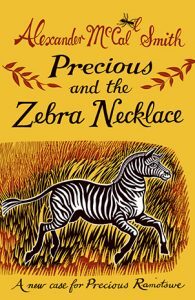 In Alexander McCall Smith’s Precious and the Zebra Necklace, the two girls set off with a nurse to a distant village in search of truth. Western Health & Safety laws and social conventions would disallow this. But it is normal for the family being portrayed in this story.
In Alexander McCall Smith’s Precious and the Zebra Necklace, the two girls set off with a nurse to a distant village in search of truth. Western Health & Safety laws and social conventions would disallow this. But it is normal for the family being portrayed in this story.
In Alvin Ho series by Lenore Look, Alvin visits China with his family. There he finds he can’t go out when the smog and pollution is very high and he also discovers the colourful markets and wonderful people, when he does venture out.
Cai explains why discussing differences is a necessary step in multicultural literature.
…first step toward the goal is to accept, tolerate and respect cultural differences. To cross cultural borders, paradoxically, we need to recognize and face them first. If we do not understand and respect cultural differences, there would be no rapport on an equal basis. (2002:130)
Having said that these books are not pulpits for political views. Not a single book beats you on the head with the issues of racism or other issues.
Kalu writes in the Guardian (2015) on this, “Racism exists and writers have the opportunity to make important contributions to speculating how society might deal with it.”
While discussing the differences are important, all these stories demonstrated similarities too. Friendships, love, loss of a pet, loss of a grandparent, judging others, doing mischief – these universal experiences are portrayed through the lens of a lead character who is either Black, Asian or from Minority Ethnic heritages.
In summary, a universally appealing early fiction series with a Black, Asian or Minority Ethnic lead character would not only be funny, consistent, feature a unique and memorable main character and have a strong supporting cast; it should also have an authentic setting, keep culture of the main character in its core, avoid stereotypes and celebrate the differences and similarities between the character’s background and the mainstream.
Check out the Prince Veera series here. A Jar of Pickles has been shortlisted for the Surrey Children’s Book Award 2018.
May 4, 2018
You’re Safe With Me – Blog Tour
We are taking the new book out for a spin on the Internet. We join wonderful hosts across the UK who will interview us, allow us to talk about the story and the art from the book.
If you want to know the inspiration behind the story and how Poonam creates the art for her intricate patterns, you can’t miss our stops on this tour.

